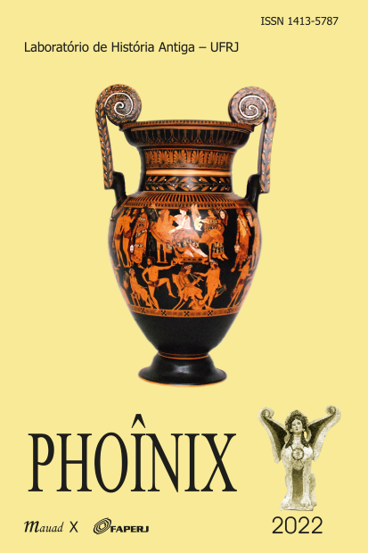THE TECHNOLOGY OF CLASSICAL NATURALISM IN ANCIENT RELIGIOUS IMAGES?
DOI:
https://doi.org/10.26770/phoinix.v28n1a9Palavras-chave:
classical art, Gandharan art, Buddha, cult images, naturalism.Resumo
The characteristic forms of Graeco-Roman naturalism, first developed in late Archaic and Classical Greece and ultimately inherited by the Roman world, could reasonable be viewed as a sort of artistic ‘technology’ within religious imagery, facilitating the efficacy of the cult image as a proxy for a god. This is true even for the Roman period when the heritage of Greek styles and conventions had become a highly conventionalized and conservative ‘language’ for religious representation. Nevertheless, the utility of classical naturalism as a representational strategy in such images had its limits. An interesting sidelight is cast on this issue by considering the ancient Buddhist art of Gandhara in Central/South Asia, which adopted the conventions of classical naturalism afresh, in order to invent the anthropomorphic image of the superhuman yet superlatively humane Buddha. The Gandharan case illustrated the undiminished potential of this visual tradition in the early centuries AD.
Downloads
Downloads
Publicado
Como Citar
Edição
Seção
Licença
Ao encaminhar textos à Revista Phoînix, o autor estará cedendo integralmente seus direitos patrimoniais da obra à publicação, permanecendo detentor de seus direitos morais (autoria e identificação na obra), conforme estabelece a legislação específica.
O trabalho publicado é considerado colaboração e, portanto, o autor não receberá qualquer remuneração para tal, bem como nada lhe será cobrado em troca para a publicação.
Os textos são de responsabilidade de seus autores. Citações e transcrições são permitidas mediante menção às fontes.
O uso dos textos publicados em nossa revista poderão ser distribuídos por outros meios, desde de que atribuídos devidamente à autoria e publicação. A revista está vinculada à licença CCBY-NC (atribuição não-comercial, conforme o Creative Commons).






































